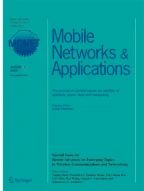Abstract
For many years, the organizations had monitored the technological environments to anticipate changes with potentially positive or negative impacts on their business using technological surveillance process. However, the new Big Data scenarios turned the traditional tools and methods no longer sufficient. This paper proposes an automated technological surveillance method by using a map-reduce model to deal with Big Data scenarios divided into five processes: planning, collection, organization, intelligence, and communication. We implemented a system prototype to validate the proposed approach. It was developed in Python and Javascript, using ontologies for knowledge modeling, NoSql database to store and parallel processing of the publications. The system collected 2,918 publications, identified the monitored technologies, extracted the metadata, analyzed them, and generated charts for the stakeholders. In conclusion, the method demonstrated be feasible to automate the technology watch process in Big Data scenarious and dramatically reduced the workload involved when implemented by a system, offering a solid approach to automatically identify a set of technologies with increasing popularization in Web portals.
Similar content being viewed by others
References
Abe H, Tsumoto S (2009) Detecting temporal trends of technical phrases by using importance indices and linear regression. In: International symposium on methodologies for intelligent systems. Springer, Berlin, Heidelberg, pp 251–260
ABNT Brazilian Association of Technical Standards. Guidelines for research, development and innovation management systems (R&D&I) [In Portuguese: Associação Brasileira de Normas Técnicas. Diretrizes para sistemas de gestão da pesquisa, do desenvolvimento e da inovação (PDI).] https://www.abntcatalogo.com.br/norma.aspx?ID=088796. Accessed 28 Oct 2020. Accessed 28 Oct 2020"/>
AENOR Spanish Association for Standardization and Certification. Spanish Experimental Standard Rule UNE 166006 R&D&I: Technological Surveillance System [In Spanish: Asociación Española de Normalización y Certificación. Norma Española Experimental UNE 166006 Gestión de la I +D +i: Sistema de Vigilancia Tecnológica]. https://www.aenor.com/normas-y-libros/buscador-de-normas/une?c=N0059973. Accessed 28 OCt 2020
Salgado Batista D, Guzmán Sánchez MV, Carrillo Calvet H (2003) Establishment of a scientific-technological surveillance system. Technological Forecasting [Original title in Spanish: Establecimiento de un sistema de vigilancia científico-tecnológica]. ACIMED 11(6):0–0
Dean J, Ghemawat S (2008) MapReduce: Simplified data processing on large clusters. Commun ACM 51(1):107–113
Ena O, Mikova N, Saritas O, Sokolova A (2016) A methodology for technology trend monitoring: the case of semantic technologies. Scientometrics 108(3):1013–1041
Flick U (2009) Introduction to Qualitative Research [Original title in Portuguese: Introdução à Pesquisa Qualitativa]. Artmed, Porto Alegre
Geum Y, Jeon J, Seol H (2013) Identifying technological opportunities using the novelty detection technique: A case of laser technology in semiconductor manufacturing. Technol Anal Strateg Manag 25(1):1–22
Gil AC (2010) How to design research projects [Original title in Portuguese: Como elaborar projetos de pesquisa]. Atlas, Barueri
Hakim AR, Djatna T (2015) Extraction of multi-dimensional research knowledge model from scientific articles for technology monitoring. In: 3rd international conference on adaptive and intelligent agroindustry (ICAIA). IEEE, pp 300–305
León AM, Castellanos OF, Vargas FA (2006) Assessment, selection and relevance of software tools used in technological surveillance [Original title in Spanish: Valoración, selección y pertinencia de herramientas de software utilizadas en vigilancia tecnológica]. Ingeniería e investigación 26(1):92–102
Momeni A, Rost K (2016) Identification and monitoring of possible disruptive technologies by patent-development paths and topic modeling. Technol Forecast Social Chang 104:16–29
Nam S, Kim K (2017) Monitoring newly adopted technologies using keyword based analysis of cited patents. IEEE Access 5:23086–23091
Palop F, Vicente JM (1999) Technological Surveillance and Competitive Intelligence. Its potential for Spanish companies [Original title in Spanish: Vigilancia tecnológica e inteligencia competitiva: su potencial para la empresa española]. Cotec, Madrid
Sánchez Torres JM, Palop Marro F (2002) Software tools for the practice in the company of Technological Surveillance and Intelligence [Original title in Spanish: ”Herramientas de software para la práctica en la empresa de la Vigilancia Tecnológica e Inteligencia Competitiva”], Evaluacioń Comparativa, 1© Edición, TRIZ. España
Park H, Kim E, Bae KJ, Hahn H, Sung TE, Kwon HC (2011) Detection and analysis of trend topics for global scientific literature using feature selection based on gini-index. In: IEEE 23rd international conference on tools with artificial intelligence. IEEE, pp 965–969
Pascal-Filho DSM, Macedo DDJ, Dutra ML (2021) A MapReduce-based Method for Achieving Active Technological Surveillance in Big Data Environments. 2nd EAI International Conference on Data and Information in Online Environments. Florianopolis, Brazil, DIONE
PDIC2022 Industry Development Program of the Brazilian State of Santa Catarina for 2022: competitiveness with sustainability [In Portuguese: Programa de Desenvolvimento da Indu’́stria Catarinense 2022: competitividade com sustentabilidade]. http://www4.fiescnet.com.br/homepdic. Accessed 28 Oct 2020
Sharma S, Gupta P (2015) The anatomy of web crawlers. In: International conference on computing, communication automation. IEEE, Greater Noida, India, pp 849–853
Shiryaev AP, Dorofeev AV, Fedorov AR, Gagarina LG, Zaycev VV (2017) LDA models for finding trends in technical knowledge domain. In: IEEE conference of russian young researchers in electrical and electronic engineering (EIConRus). IEEE, pp 551–554
Tomaél MI (2008) Information sources on the internet [Original title in Portuguese: Fontes de informação na internet]. EDUEL, Londrina
Wei YM, Kang JN, Yu BY, Liao H, Du YF (2017) A dynamic forward-citation full path model for technology monitoring: An empirical study from shale gas industry. Appl Energy 205:769–780
White T (2015) Hadoop: The definitive guide. O’Reilly, Beijing
Author information
Authors and Affiliations
Corresponding author
Additional information
Publisher’s Note
Springer Nature remains neutral with regard to jurisdictional claims in published maps and institutional affiliations.
Rights and permissions
About this article
Cite this article
Filho, D.S.M.P., de Macedo, D. & Dutra, M.L. Technological Surveillance in Big Data Environments by using a MapReduce-based Method. Mobile Netw Appl 27, 1931–1940 (2022). https://doi.org/10.1007/s11036-022-01962-2
Accepted:
Published:
Issue Date:
DOI: https://doi.org/10.1007/s11036-022-01962-2
